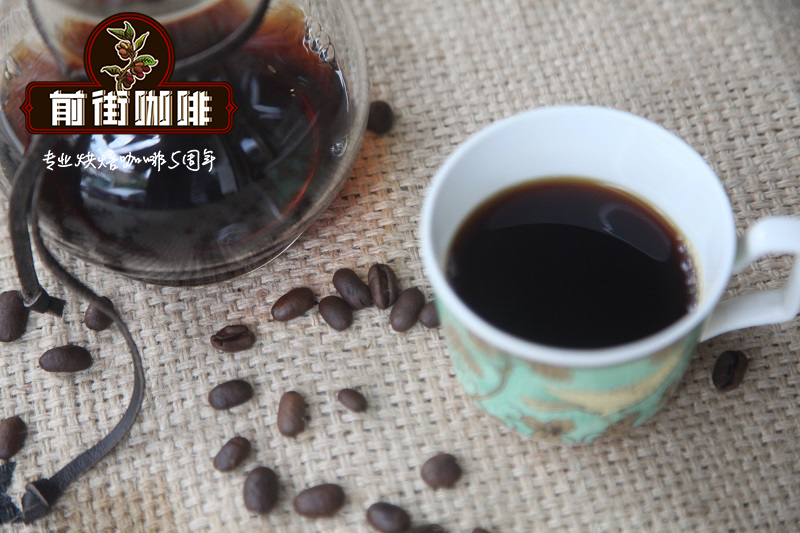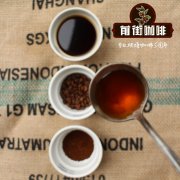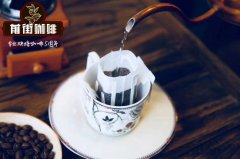A brief introduction to the taste and flavor characteristics of washed Yejia Xuefei recommended by boutique coffee bean brands

Professional coffee knowledge exchange more coffee bean information please follow the coffee workshop (Wechat official account cafe_style)
Qianjie-Yega Ficher washing Yapper, sharing of cooking parameters
Friends who like coffee often don't know which brand of coffee to choose, so they have to choose it according to their favorite flavor. Today, I would like to share with you one of the most indispensable brands of boutique coffee-Yega Xuefei in Ethiopia.
Yega Chuefei is synonymous with fruity and floral coffee. Its clean and bright taste and lively acidity are unforgettable. Yejia Xuefei is an excellent producing area with many legends, and it is also a hot coffee item in the boutique coffee market in the past decade. Yega Xuefei is the highest altitude coffee producing area in Ethiopia, and it is also the local transportation stronghold and coffee distribution center. It has very advanced and developed coffee processing equipment and manpower level, which has created a very high coffee quality.
What is washing?
The so-called washing method is one of the treatment methods of raw coffee beans. The coffee beans after harvest must enter the treatment program immediately, otherwise they will begin to ferment, making the coffee beans have a bad smell. There are two methods of treatment: "solarization" and "washing", which will cause different flavors.
Complete washing method
The peel, pulp and mucous membrane are removed by washing and fermentation. farms that use the washing method must build washing ponds and be able to introduce an endless supply of live water. During the treatment, the finished beans are put into the pool and passed back and forth, using the friction of beans and the power of running water to wash the coffee beans until smooth and clean.
After washing, at this time, the coffee beans are still wrapped in the pericarp with a moisture content of 50%. They must be dried to reduce the moisture content to 12%, otherwise they will continue to be mellow, moldy and rotten. The better treatment method is to use sunlight drying, although it will take 1 ~ 3 weeks, but the flavor is very good and very popular.
Yega Ficher, Ethiopia, wash Yapo
Ethiopia Yirgacheffe Kochere Abol Washed G1
Producing area | Yega Fischer
Altitude | 1900 m
Variety | Ethiopian native species
Treatment | washing treatment
Baking degree | shallow baking
Flavor: the mouth has apple juice and orange blossom aromas, middle citrus acid and nectarine aromas, black tea tail rhyme
[Ethiopia Yega Ficoche wash Yapo]: it is recommended to use 15g powder 91 degrees water temperature, water powder ratio 1:16, grindness BG-6S,V60 filter cup, water powder ratio 1:15, the first water injection 30g, stew 28s-30s, the second water injection 120g water cut off, the third water injection to 230g water, the end of the water do not, extraction time about 2v v 00s.
Gift of knowledge: in Ethiopian, Abol stands for the liquid that is boiled for the first time in traditional Ethiopian coffee, that is, the part with the strongest flavor and aroma.
END
Important Notice :
前街咖啡 FrontStreet Coffee has moved to new addredd:
FrontStreet Coffee Address: 315,Donghua East Road,GuangZhou
Tel:020 38364473
- Prev

A brief Analysis of the reasons for the cultivation conditions of Coffee in Ethiopia Solar Yerjia Shifei Titanate
Professional coffee knowledge exchange more coffee bean information please follow the coffee workshop (Wechat official account cafe_style) in front of the street-Yega Xuefei sun snow map, brewing parameters sharing Ethiopia has been providing some of the world's best evaluated single high-quality coffee beans. Generally speaking, Ethiopian coffee is famous for its fruit wine and obvious acidity. Ethiopian planting
- Next

The characteristics of Sidamo Coffee introduce what kind of coffee beans are suitable for hand brewing.
Professional coffee knowledge exchange more coffee bean information please pay attention to the coffee workshop (Wechat official account cafe_style) Qianjie-Sidamo coffee characteristics, brewing parameters share Sidamo grows in southern Ethiopia plateau between 1400-2200m above sea level, the volcanic soil is one of the most famous coffee producing areas in southern Ethiopia with fertile nutrients and good drainage. Because of Sidamo
Related
- Beginners will see the "Coffee pull flower" guide!
- What is the difference between ice blog purified milk and ordinary milk coffee?
- Why is the Philippines the largest producer of crops in Liberia?
- For coffee extraction, should the fine powder be retained?
- How does extracted espresso fill pressed powder? How much strength does it take to press the powder?
- How to make jasmine cold extract coffee? Is the jasmine + latte good?
- Will this little toy really make the coffee taste better? How does Lily Drip affect coffee extraction?
- Will the action of slapping the filter cup also affect coffee extraction?
- What's the difference between powder-to-water ratio and powder-to-liquid ratio?
- What is the Ethiopian local species? What does it have to do with Heirloom native species?

